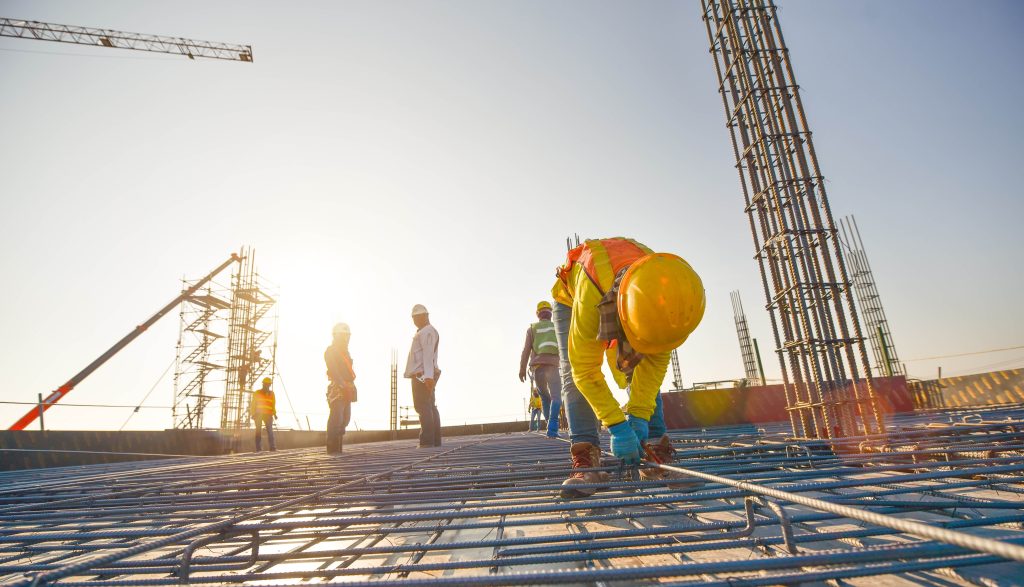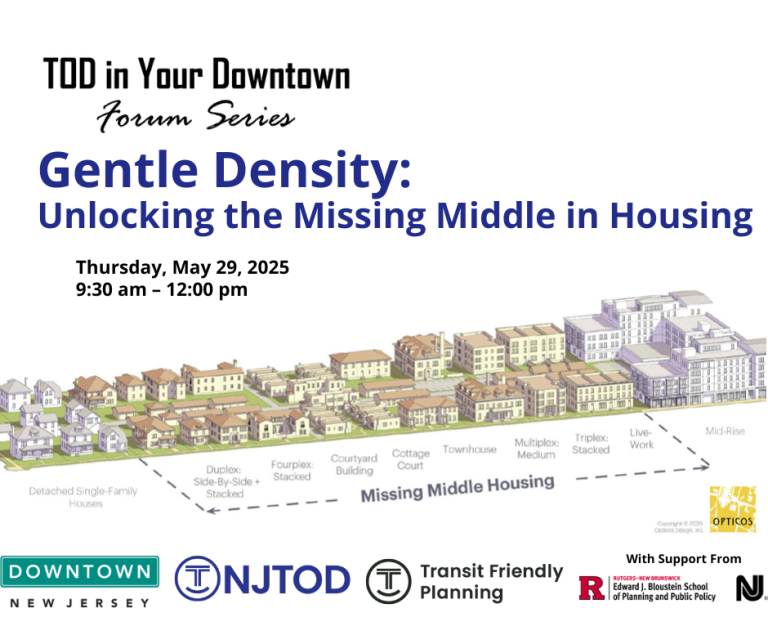Redevelopment Matters: NJ Supreme Court Decision Signals Shift in Redevelopment Law
Michael J. Coskey, Esq.,
Partner, Greenbaum, Rowe, Smith & Davis, LLP
Justine A. DelVecchio, Esq.
Associate, Greenbaum, Rowe, Smith & Davis, LLP
Robert S. Goldsmith, Esq.
Co-Chair Redevelopment & Land Use Development, Greenbaum, Rowe, Smith & Davis, LLP
April 05, 2024
On March 13, 2023, the Supreme Court of New Jersey issued its decision in Malanga v. Township of West Orange, 253 N.J. 291 (2023) (“Malanga”), which marks a significant turning point in the court’s decisional law in reviewing municipal determinations of “blight” under the Local Redevelopment and Housing Law, N.J.S.A. 40A:12A-1, et seq. (the “LRHL”). In Malanga, the Supreme Court took the unusual step of invalidating the municipal designation of property as an area in need of redevelopment under the LRHL, a remedial statute entitled to be liberally construed by holding that the municipal record contained insufficient evidence of the statutory criteria required by N.J.S.A. 40A:12A-5(d) to sustain its determination of “blight” under the LRHL. This holding is in stark contrast to the Supreme Court’s last major redevelopment decision in 62-64 Main Street, L.L.C. v. Mayor and Council of City of Hackensack, 221 N.J. 129 (2015) (“62-62 Main St.”) and raises a concern that lower courts may overread Malanga as happened after the decision in Gallenthin Realty Development, Inc. v. Borough of Paulsboro, 191 N.J. 344 (2007) (“Gallenthin”).
In Gallenthin, the Supreme Court invalidated a municipal designation that an area was in need of redevelopment pursuant to N.J.S.A. 40A:12A-5(e) of the LRHL. However, the decision in Gallenthin, as distinct from the Supreme Court’s holding in Malanga, concerned the constitutional infirmities with the definition of “blight” within subsection 5(e) of the LRHL. Specifically, the Gallenthin Court invalidated the designation of the property as an area in need of redevelopment, having concluded that N.J.S.A. 40A:12A-5(e), and thus the municipality’s interpretation of the statute, violated the Blighted Areas Clause of the New Jersey Constitution, N.J. Const. art. VIII, §3, 1. Notwithstanding this limited holding, trial and appellate courts throughout the State read Gallenthin as applying a new and additional constitutional standard for a finding of “blight” by requiring a municipal finding that the subject property negatively affects surrounding areas. Our courts’ misapplication of Gallenthin continued until the Supreme Court addressed the matter in 62-64 Main St.
In 62-64 Main St., the Supreme Court reversed the decision of the Appellate Division, holding that the municipal record contained substantial evidence to support the municipal designation of property as an area in need of redevelopment. Notably, the Supreme Court in 62-64 Main St. addressed the lower courts’ misreading of its prior decision, declaring that Gallenthin was not to be interpreted as superimposing an additional requirement over the LRHL’s statutory criteria. The 62-64 Main St. Court noted, painstakingly, the LRHL’s legislative history and the ample precedent interpreting the law in support of its holding. As the 62-64 Main St. Court noted, the statutory history evidences a legislative intent to enact remedial legislation to grant local officials broad authority to address social and economic issues affecting communities through redevelopment. Moreover, the 62-64 Main St. Court cited Wilson v. City of Long Branch, 27 N.J. 360 (1958) and Levin v. Township Committee of Bridgewater, 57 N.J. 506 (1971) as further support of the remedial nature of the LRHL. However, approximately eight (8) years after 62-64 Main St., the Supreme Court issued its decision in Malanga.
In Malanga, the Township Council for the Township of West Orange accepted the recommendation of the Township Planning Board to designate the West Orange Public Library as an area in need of redevelopment under the LRHL. The Township Planning Board’s recommendation to the Township Council that the library satisfied the criteria of N.J.S.A. 40A:12A-5(d). The Township Planning Board relied upon the findings and opinion of a professional planner that the library’s age, physical deficiencies, and lack of space were a detriment to the welfare of the general public as they prevented the provision of adequate and essential services that promote equity, education, and a sense of community. Specifically, the undisputed evidence before the Planning Board established that the library’s physical limitations prevented the public from receiving adequate and sufficient services. These physical limitations greatly limited the digital access of residents in an underserved community, thus furthering the social and economic divide. In addition, the Planning Board heard testimony concerning the need to make structural repairs, improve accessibility, and upgrade the library’s HVAC system and electrical equipment. In turn, the Township Council designated the property as an area in need of redevelopment, having found that there was substantial evidence to conclude that the library’s faulty arrangement, obsolescence, and obsolete layout had a detrimental effect on the overall welfare of the community and thus satisfied the statutory criteria of N.J.S.A. 40A:12A-5(d) of the LRHL.
The Malanga Court, however, disagreed with the municipality’s findings, noting that N.J.S.A. 40A:12A-5(d) requires “substantial evidence” (1) that areas with buildings or improvements suffer from one of the enumerated conditions; and (2) because of said condition(s), the buildings or improvements are detrimental to the safety, health, morals, or welfare of the community. The Malanga Court, harkening back to the post-Gallenthin interpretation of the LRHL, stated further that the harm may not be presumed; instead the LRHL requires a showing of actual detriment. In applying its interpretation of N.J.S.A. 40A:12A-5(d) to the underlying facts in Malanga, the Supreme Court invalidated the municipality’s designation of the library as an area in need of redevelopment. Specifically, the Supreme Court held that the record lacked substantial evidence of obsolescence, as found to exist by the Township Council, noting that a need to perform upgrades and improvements does not render the library obsolete. More importantly, however, the Supreme Court found that the record lacked substantial credible evidence that the library’s faulty arrangement, obsolescence, or obsolete layout resulted in any detriment to the welfare of the community.
Moreover, the Supreme Court’s review of the municipal record and criticism of the Township Council’s findings in Malanga represents a stark contrast to the standard applied by the Court in 62-64 Main St. The Court in 62-64 Main St. reiterated the well-known standard that municipal decisions are invested with a presumption of validity and any judicial review of such decision must be informed by the remedial nature of the LRHL. This, of course, does not provide municipal officials with unbridled discretion to designate property as an area in need of redevelopment. Nonetheless, the Legislature found it appropriate to grant local officials, and not the judiciary, the authority to make such determinations because of their knowledge and understanding of the needs of the community. As such, the Malanga decision, as did the Gallenthin decision, may well result in our lower courts’ misapplication of a “heightened standard” when reviewing a challenge to a designation under the LRHL.
Accordingly, municipalities and redevelopers intending to rely upon N.J.S.A. 40A:12A-5(d) to fulfill the LRHL’s original purpose of improving residents’ quality of life and spurring economic opportunities must be cognizant of the Malanga decision. The parties must ensure that the municipal record contains substantial evidence of the two (2) statutory criteria. Specifically, the municipal record must contain substantial evidence:
- that the buildings or improvements located within the proposed redevelopment area suffer from at least one of the following conditions, dilapidation, obsolescence, overcrowding, faulty arrangement or design, lack of ventilation, light and sanitary facilities, excessive land coverage, deleterious land use or obsolete layout; and
- that there is actual harm, not presumed, to the safety, health, morals or welfare of the community resulting from the condition found to exist. Thus, the municipal record must show causation between the condition and the actual harm; the two statutory requirements cannot be separated.
Michale Coskey specializes in real estate law, focusing on transactions, litigation, and land use issues. He assists clients in acquiring, selling, and leasing commercial and multi-family residential properties and in developing and redeveloping real estate projects.
Justine DelVecchio concentrates her practice in the areas of real estate and redevelopment. She assists in the firm’s representation of clients in commercial and residential property transactions, including acquisitions, sales, and leases.
Robert Goldsmith‘s practice focuses on redevelopment, downtown and urban revitalization, transit-oriented development, project financing and incentives, sustainable building initiatives, and public-private partnerships. He is also a Downtown New Jersey Board Member.
Greenbaum, Rowe, Smith & Davis is a recognized leader among New Jersey law firms, with deep roots in the state and a far-reaching knowledge of New Jersey legal issues. More information at www.greenbaumlaw.com.



